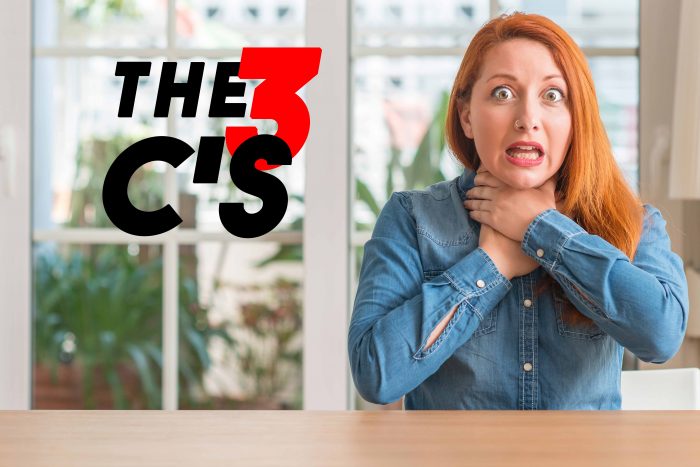The Three C’s

The Three C’s
I still remember that day in sixth grade when roughly fifty children sat in the cafeteria, chattering excitedly, mouths full of mini corn-dogs and smiley-face-shaped french fries. Suddenly, there was coughing in the distance. The children seated at the lunch table went silent, afraid, and watched the boy’s face turn pale. The teachers on supervision duty knew that when the room went this quiet, something had to be seriously wrong. Before we knew it, our health teacher (who had a second job as a mortician) sprinted towards him, lifted him up off the chair and performed the heimlich maneuver. After a couple abdominal thrusts, the boy gasped for air as a potato smiley shot out of his mouth. As the entire room was immobilized by fear, our health teacher was calm and prepared. Thankfully, the teacher became the boy’s hero before she had to become his mortician.
What’s the moral of the story? Being prepared makes you calm in the face of an emergency. Also, my health teacher was a very interesting lady.
No matter where you are or what you’re doing, there is always a chance that an emergency involving another’s person’s health could arise. Choking, fainting, a violent assault–whatever the incident may be, your immediate response could help save the person’s life. Know what to do when you are faced with a crisis.
Thanks to Zywave, and Adam’s Safety Training, I was able to find basic steps to take in emergency situations. The steps are called:
The Three C’s
Check. Skim the area around you for any potential hazards, such as oncoming traffic or fire. It is crucial to ensure your own safety when assisting the victim. Once you’ve checked the safety of the area, check the condition and the responsiveness of the victim. Check for signs such as: is the victim bleeding? Is the victim breathing? Is he/she conscious? Does he/she have a pulse?
Call. At this point, it is crucial to the victim’s life that you call emergency services immediately. Be prepared to quickly recite all the important details of the incident, such as:
- The victim’s physical condition
- Description of the incident
- The exact location of the incident
Care. While you wait for medical emergency services, the first-responder will give you any additional care instructions. Monitor the victim’s breathing. If necessary and with proper certification, perform CPR on the victim.
Before performing The Three C’s, it’s essential that you take a deep breath and remember to remain calm. This is the valuable lesson I learned from my health teacher: the combination of preparedness and being calm could save a life in an emergency.












